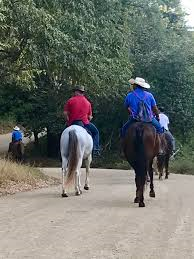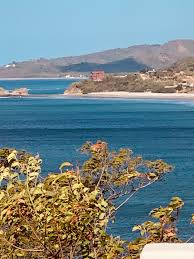It’s commonly said that you can’t get rich working for someone else. That the only way to achieve financial independence is to own your own business.
This idea feels true when you are stuck in a thankless job, working long hours for mediocre pay. But it’s nonsense.

It’s perfectly possible to become wealthy as an employee. You’ve just got to (a) be working for the right kind of company, (b) chart a course for yourself that takes you from ordinary to valuable and from valuable to invaluable, and (c) make sure you get the compensation you deserve.
I know this to be true for three reasons: I did it myself. I mentored at least a dozen employees that did the same thing. And I looked at a foot-high stack of research on highly paid employees that confirmed my experience.
(In this essay, I’ll outline the principal ideas I’ve developed on this subject. I’ll present them just as I presented them to those I’ve mentored: as observations and advice. Sometime later this year, if I can get someone to help me, I’ll expand this essay into a book. But what you are about to read should get you going and keep you moving in the right direction, if you are interested.)
Nothing I’m about to suggest will be especially difficult. It will take time. And commitment. And the willingness to do some things that you are not doing now. But there will be no big scary leaps required of you. Begin where you are now, with the skills and knowledge you currently have. Then move forward, taking small, sensible steps, acquiring the skills and knowledge you currently lack.
There are 5 stages to this journey:
- Make sure you are working for the right company.
- Become extraordinary at what you do.
- Develop additional, financially valuable skills.
- Expand your reach so that your business can’t do without you.
- Move from employee to stakeholder.
Work for a Business That’s Right for You
There are basically three kinds of businesses that can provide the environment you are looking for, where you can become rich.
Big corporations
Big corporations will pay you serious money if you are at the top of their food chain. A senior vice president of a billion-dollar business can easily make $350,000-$750,000.
It’s not difficult to accumulate an eight-figure net worth if you get yourself promoted into one of those highly paid jobs quickly. But the competition will be strong. You will be competing with dozens (if not hundreds) of very smart, very hardworking, very ambitious young people. You will have to be not only outstanding at your job and then move yourself strategically towards the money side of the business, you will also have to be politically shrewd. Because all big companies suffer from some amount of corporate politics. And even if you have what it takes to rise to the top, it will likely take 10-20 years.
Financial service businesses
Brokerages, banks, and insurance companies are particularly good places for ambitious people that want to get rich as employees because they are designed to motivate and reward their employees with commissions and bonuses. And if you are with the right company, those commissions and bonuses can be huge.
There are probably a thousand such businesses in the USA that are happy to pay their best people $250,000 to $1 million or more – if they can perform. Career paths at this level include portfolio managers, marketers, and salespeople.
Becoming a high-earning portfolio manager is a matter of knowledge, skill, and luck. If you are highly intelligent, mathematically oriented, and mentally disciplined, this could be an exciting and rewarding path for you. But be prepared for the emotional challenges. It is difficult to keep an investment portfolio’s performance above the pack. When the performance is up there, you are a superstar. When it drops below – and eventually it will – you will be a pariah.
A less demanding (in my view) career path is to become a broker – starting out working under another broker, developing leads and then signing up your own accounts, and then eventually having a team of junior marketers and junior salespeople working for you. Brokering is 80% salesmanship, 10% customer management, and 10% knowing what you are doing. To succeed as a broker, you need to be very good at all three.
Small companies with big potential
The third type of business that offers employees the potential to become rich is the small, entrepreneurial company with big growth potential.
This was my choice as a young man, and I don’t regret it. Starting out with a small company, especially if you are young, gives you a fast track to making big money that you won’t get in a big corporate environment. You are not competing against dozens of hyper-smart and uber-ambitious colleagues. And there is no formal corporate ladder to climb.
With small businesses, it’s generally easier to take on more responsibility. It’s also much more likely that you will be working directly with the founder, who will be very conscious of everything you are doing to make him or her rich.
Plus, working for a small business gives you a much greater ability to shape the corporate culture so that you can become not just wealthy but also proud of what you do.
Becoming a Valuable Employee
Whatever type of company you choose, your journey to wealth begins by establishing yourself as a valuable employee.
Most employees go through their lives working for businesses they care nothing much about, dealing with problems they’d rather not face and getting paid very ordinary wages. They would like to earn more. They may even be willing to do more. But their ambitions are sporadic and fleeting. Most of the time, they are simply showing up.
Such employees are never going to get substantial raises. They can expect their salary to rise very slowly and very gradually. From 1984-2017, for example, the average salary rose by around 3.5%, according to the Average Wage Index.
As an ordinary employee, that’s what you should expect. But getting a 3.5% increase every year will never get you rich. It’s barely enough to keep up with inflation.
Becoming a valuable employee, however, puts you on a different trajectory. Extraordinary employees can – and often do – get raises that begin at twice the 3.5% average and often jump by 10% yearly with periodic leaps of 25% or more.
That sort of arithmetic is why most college-educated employees starting out today can expect to quadruple or quintuple their salaries over a career span of about 20 years, whereas top-performing employees can easily double or triple that.
A valuable employee, earning only a minimum increase of 7% a year, will see his compensation grow from $50,000 to $193,000 in 20 years. At 10%, he will see his compensation break into the quarter-million-dollar range.
There are basically four ways to distinguish yourself as a valuable employee and see your compensation accelerate at a faster pace: READ MORE
 MarkFord
MarkFord











